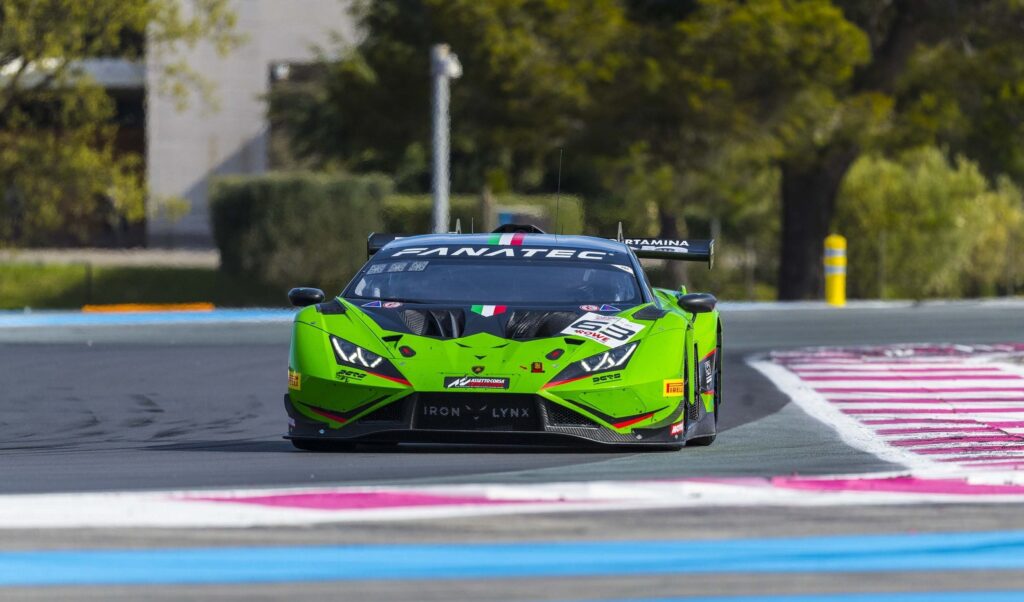Is Racing a Sport: Unveiling the Thrills and Skills

Racing is considered a sport, involving competition and physical exertion. It requires skill, athleticism, and strategy.
Racing, whether on foot, in vehicles, or on animals, is a widely recognized sport that has captivated audiences for centuries. The adrenaline-pumping action, the intense focus, and the striving for victory all contribute to the sport’s appeal. From Formula 1 car racing to horse racing, each discipline requires precision, talent, and stamina from its participants.
Athletes undergo rigorous training to enhance their skills and improve their performance on the track or course. Racing events also attract a large following, with fans cheering on their favorite competitors and celebrating the thrill of speed and competition.
HISTORY OF RACING
Racing has been a part of human civilization for centuries, with its origins dating back to ancient times. The history of racing is a fascinating journey that has evolved through the years, reflecting the spirit of competition and the drive for excellence. From its early beginnings to its remarkable evolution, racing has captured the imagination of people across the globe.
EARLY BEGINNINGS
In the early days, racing was a means of testing the speed and agility of horses, with chariot races being a popular sport in ancient civilizations such as Greece and Rome. These races were not only a form of entertainment but also served as a way to showcase the power and prowess of the animals. As time progressed, racing expanded to include other forms of transportation, such as boats and eventually motorized vehicles.
EVOLUTION
The evolution of racing saw the development of organized sporting events, with rules and regulations put in place to ensure fair competition. The 20th century marked a significant milestone in the history of racing, as it witnessed the emergence of professional racing leagues and the widespread popularity of motorsports. This period also saw advancements in technology and engineering, leading to faster and more efficient vehicles that have transformed racing into a highly competitive and esteemed sport.

CHARACTERISTICS OF A SPORT
When discussing whether racing is a sport, it is crucial to understand the characteristics that define a sport. Here, we will delve into the aspects of physical exertion, competition, and skill that are vital in determining whether racing can be classified as a sport.
PHYSICAL EXERTION
Racing involves intense physical exertion as drivers must navigate high speeds, and G-forces, and endure long hours in the cockpit.
COMPETITION
The essence of racing lies in fierce competition as drivers strive to outperform each other and secure victory on the track.
SKILL
Racing demands exceptional skill in maneuvering cars, making split-second decisions, and strategically outwitting opponents to claim the lead.
RACING AS A SPORT
Racing is often a topic of controversy when discussing whether it qualifies as a sport. Let’s delve into the various aspects of racing as a sport to understand the physical demands, competitive nature, and skill requirements involved.
PHYSICAL DEMANDS
Racing demands athletic prowess, requiring endurance and physical strength to withstand high speeds and G-forces.
COMPETITIVE NATURE
Racing is inherently competitive, with drivers constantly vying for position, leading to intense battles on the track.
SKILL REQUIREMENT
Precision and quick reflexes are essential in racing, as drivers must navigate tight corners and make split-second decisions.
ARGUMENTS AGAINST RACING AS A SPORT
Racing is often a topic of debate when it comes to being classified as a sport. While many people argue in favor of it, there are also strong arguments against considering racing as a traditional sport. Let’s explore some of these arguments and understand why some individuals do not categorize racing as a sport.
LACK OF PHYSICALITY
One of the main arguments against racing being considered a sport is the lack of physicality. Unlike traditional sports such as football or basketball, where athletes engage in intense physical exertion, racing predominantly involves sitting behind the wheel and operating a vehicle. The physical requirements are not as demanding as those in traditional sports.
MORE ABOUT EQUIPMENT
Critics of racing often argue that the focus is more on the equipment rather than the physical abilities of the participants. The high reliance on well-designed, high-performance vehicles means that success in racing is perceived as being more about the technology than the skills and physical prowess of the drivers. The equipment’s significance in determining the outcomes is a prominent concern for those who contest the status of racing as a sport.
DEBATE ON SKILL
Another contentious point in the argument against racing as a sport is the debate on skill. While there is no denying the precision, strategy, and split-second decision-making required in racing, some critics argue that these elements do not necessarily constitute a traditional sporting skill set. The debate around the nature of the skills involved in racing continues to be a significant point of contention.

ARGUMENTS FOR RACING AS A SPORT
Racing has long been a subject of debate, with some arguing that it should not be considered a sport. However, there are compelling arguments that support racing as a legitimate sport. In this article, we will explore three key aspects that highlight the athleticism, mental agility, and team dynamics involved in racing.
ATHLETICISM INVOLVED
Racing requires a high level of athleticism, both physically and mentally. Athletes participating in racing must possess exceptional physical fitness and endurance to withstand the demands of the sport. They undergo rigorous training programs to strengthen their cardiovascular health, build muscle strength, and improve overall athletic performance. The physical exertion involved in racing, whether it’s on the track or in motorsports, is on par with other recognized sports.
MENTAL AGILITY
In addition to physical fitness, racing demands extraordinary mental agility. Drivers need to make split-second decisions, anticipate their competitors’ moves, and adapt to constantly changing scenarios on the track. They must possess excellent hand-eye coordination, razor-sharp focus, and quick reflexes. Furthermore, racers need to possess strong strategic thinking and decision-making skills, as they continuously analyze track conditions, craft strategies, and make rapid adjustments to gain a competitive edge.
TEAM DYNAMICS
Racing, particularly in motorsports, is not merely an individual endeavor. It involves a high degree of teamwork and collaboration. Drivers work closely with their team of engineers, mechanics, and strategists to fine-tune their vehicles, devise race tactics, and execute pit stops flawlessly. Team dynamics play a crucial role in racing success, as each member has their specialized roles and responsibilities, resulting in efficient coordination, trust, and effective communication. The synchronization between the driver and the team is vital to achieving the best outcomes.
In conclusion, racing encompasses the qualities that define a sport – athleticism, mental agility, and team dynamics. Through their physical prowess, quick decision-making abilities, and teamwork, racers demonstrate their skills and compete at the highest level. Racing deserves recognition as a legitimate sport, and its athletes deserve the same respect and admiration as athletes in any other traditional sport.
RACING VERSUS TRADITIONAL SPORTS
When it comes to determining whether racing is a sport, it’s important to consider racing in comparison to traditional sports. While traditional sports like basketball and soccer are well-established and universally recognized as athletic competitions, racing brings a unique set of characteristics to the table. In this article, we will delve into three key aspects that set racing apart from traditional sports: comparison of physicality, influence of technology, and spectator appeal.
COMPARISON OF PHYSICALITY
Racing and traditional sports differ significantly in terms of the physical demands they place on participants. While traditional sports rely heavily on physical endurance, agility, and strength, racing demands a combination of endurance, hand-eye coordination, and fine motor skills.
In traditional sports, athletes need to possess exceptional physical qualities such as speed, strength, and agility. In contrast, racing requires a different kind of physicality, with drivers needing to maintain intense focus and make split-second decisions while maneuvering their vehicles at high speeds.
INFLUENCE OF TECHNOLOGY
One major factor that sets racing apart from traditional sports is the influence of technology. Racing is a sport that heavily relies on technological advancements to enhance performance and safety. From aerodynamic designs to advanced engine technology, every aspect of a race car is meticulously engineered to optimize performance.
In traditional sports, while technology is not completely absent, its impact is usually limited. Equipment such as shoes, bats, and balls may have slight technological advancements, but they do not significantly alter the nature of the game itself.
| Racing | Traditional Sports |
|---|---|
| Advanced engine technology | Standardized equipment |
| Aerodynamic designs | Minimal equipment enhancements |
| Safety features | General safety guidelines |
SPECTATOR APPEAL
Another notable difference between racing and traditional sports is the level of spectator appeal. Racing has a unique appeal that caters to a global audience, with millions of fans tuning in to watch races from various forms of racing including Formula 1, NASCAR, and MotoGP.
The excitement and thrill that racing provides derive from the combination of high-speed action and the unpredictability of races. Traditional sports, while also capturing the attention of spectators, may not always provide the same level of intensity and uncertainty as racing does.
- Racing demands intense focus and split-second decision-making.
- Technology plays a significant role in enhancing racing performance.
- The global appeal and exhilaration of racing attract millions of fans worldwide.
Considering the different physical demands, the impact of technology, and the thrilling spectator appeal of racing, it becomes clear that racing is indeed a sport deserving of recognition alongside traditional sports.
FREQUENTLY ASKED QUESTIONS OF (IS RACING A SPORT)
IS RACING CONSIDERED A SPORT?
Racing is definitely considered a sport due to the physical and mental skills required, as well as the competitive nature of the activity.
WHAT MAKES RACING A SPORT?
Racing involves intense physical exertion, strategic planning, and high levels of skill, making it a sport that requires great athletic ability.
ARE RACERS ATHLETES?
Yes, racers are indeed athletes as they need to train rigorously, maintain physical fitness, and possess exceptional coordination and reflexes.
WHAT ARE THE BENEFITS OF RACING?
Racing offers numerous benefits like improved physical fitness, enhanced mental focus, adrenaline rush, camaraderie, and the thrill of competing against others.
CONCLUSION
Racing exhibits athleticism, competition, and skill, making it a genuine sport. Its physical and mental demands require rigorous training and strategy, akin to other recognized sports. Embracing inclusivity and promoting professionalism, racing clearly qualifies as a respected and esteemed sport in the global athletic landscape.






